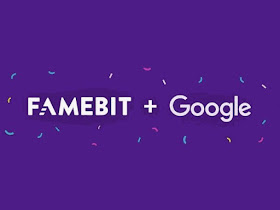After months of speculation and buildup, Nintendo
on Thursday officially unveiled its new gaming system, the Nintendo
Switch. Previously known only by the codename "NX," rumors about this
latest video game console began last year with a hint from Satoru Iwata,
the company's late president.
At the time Iwata suggested only that Nintendo was working on a new video game system, and few details have leaked since then.The Switch is Nintendo's first home gaming system since it launched the Wii U in 2012. That system is widely regarded as a disappointment -- Nintendo has sold just under 62 million units worldwide. That compares to the sale of more than 101 million units of its predecessor, the Nintendo Wii, since its release in 2006.
The Switch is not Nintendo's first comeback effort, however. Wii sales were nearly five times greater than the number of Nintendo GameCube units sold since its release in 2001.
This time around the video game publisher/developer community already has thrown early support behind the new system. Nintendo has announced more than 40 third-party partners for the Switch, including notable publishers such as Activision, Bandai Namco, Electronic Arts, Take-Two Interactive Software and Ubisoft.
The system is scheduled for a March release, but pricing has not been released.
The Nintendo Switch could sell 2.85 million units globally in 2017 if launched by the end of March, IHS has forecast.
Portable Gaming
Mobile gaming is a key feature for the Nintendo Switch, which isn't surprising, given that Pokémon Go
was such a big hit this summer. Nintendo has reaped only a small
portion of the rewards, however, due to the fact that it is a minority
owner of The Pokémon Company and its properties.
Still, its success could represent writing on the wall in regard to the power of mobile gaming.
The Switch mobile gaming system actually rests in the Nintendo Switch
Dock, which connects the unit to a TV for traditional living room-based
gaming. When lifted from the dock, the Switch can transition to
portable mode, allowing the user to enjoy all the same games on the
tablet-like device.
The Switch features a bright high-definition display and unique
Joy-Con controllers that split in half for placement on each side of the
Switch. Two players can utilize the Switch Pro Controllers for
traditional multiplayer gameplay on either the Switch's display or on a
TV. Multiple Switch consoles can be linked together for local
multiplayer competition.
"Nintendo Switch allows gamers the freedom to play however they like," said Reggie Fils-Aime, president of Nintendo of America.
"It gives game developers new abilities to bring their creative
visions to life by opening up the concept of gaming without boundaries,"
he added.
Going Mobile
Mobile does seem to be a crucial part of Nintendo's strategy with the
Switch -- yet the company is still very much handling game sales via a
business-as-usual strategy.
"Nintendo's hybrid Switch console strategy is an attempt to mitigate
against smartphone and tablet gaming, which have severely disrupted its
traditional business -- especially in the handheld gaming space," said
Piers Harding-Rolls, director and head of games research at IHS Markit.
"It would appear that with the Switch announcement Nintendo has
confirmed the conflation of its separate handheld and TV console
offerings," he told TechNewsWorld.
"Evidently, tablet and smartphone-based gaming has disrupted
Nintendo's overall model," observed Joost van Dreunen, principal analyst
at Super Data Research.
"It now seeks to get in front of it by offering a combined experience
that builds on the seamlessness of in-home gaming using a tablet, but
still relies on the sale of cartridges," he added.
"The big question marks for the Switch are its battery life and online connectivity," van Dreunen told TechNewsWorld.
Going Younger
What is also notable is that Nintendo is targeting the Switch at the
younger segment of the gaming audience, clearly moving even further away
from the older hardcore gaming market.
"Interestingly, the Switch reveal trailer was squarely targeted at
young adults, which suggests that Nintendo is refocusing its early
marketing on more traditional console buyers, but those that also
increasingly like gaming on the move," said IHS Markit's Harding-Rolls.
However, "to build success with these buyers, the offering must
include third-party titles that are supported on other platforms," he
emphasized.
The platform appears to be uniquely geared toward preteens and teenagers, noted van Dreunen.
"While the device seems much less like a toy than we're used to from
Nintendo, its features -- like backseat multiplayer and the ability to
have several people play using a single piece of the controller --
target Nintendo's traditional audience," he explained.
Nintendo Go
Pokémon Go proved that young and old alike now are willing --
at least with the right game -- to move away from the big screen
display. The Switch could play into that rather well.
"The concept of an all-in-one home and mobile gaming device is now
more realistic, due to the power available to device manufacturers from
the likes of GPU company Nvidia -- but this has been tried before in the
tablet space and with limited impact," said IHS Markit's Harding-Rolls.
"Crucially, Nintendo has access to a broad portfolio of compelling
franchises, which gives it an immediate head start against a third-party
trying the same strategy," he added. "However, the use cases and
usability must be convincing, and that remains to be seen with the
Switch."
The success of the Switch could be dependent not only on factors like
unit cost and hardware usability, but also on the availability of
compelling games to play.
"While Nintendo's first-party franchises are very strong," said
Harding-Rolls, "it will need to secure strong third-party support to
convince its target audience to buy into the platform."


























